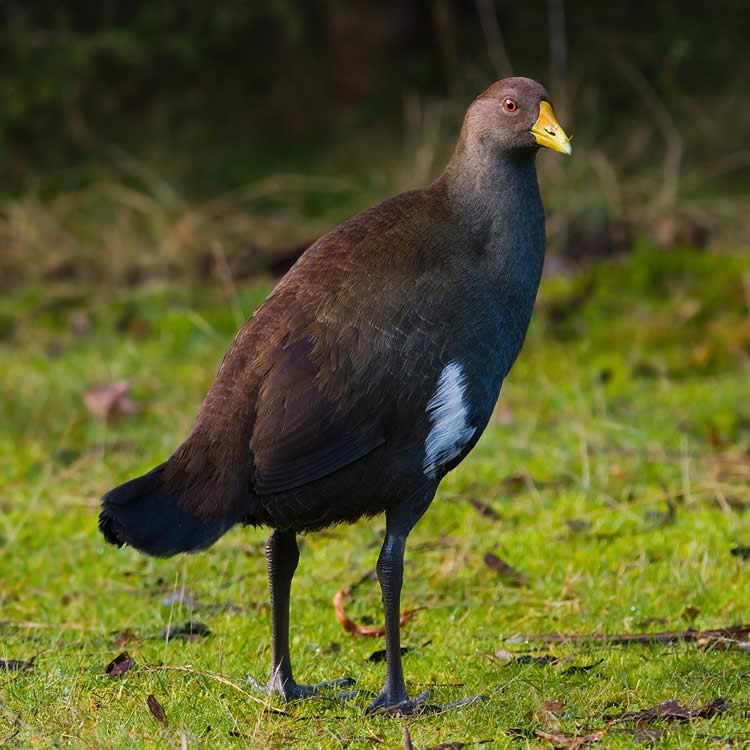Tasmanian native hen

Community type
Habitat type
Tidal wetlands and macrophytes beds
Tasmanian native hens are endemic to this state, and are most common on wetlands and near fresh water streams and rivers. They used to be common on mainland Australia, but disappeared after the dingo arrived – along with the thylacine and Tasmanian Devil.
The native hen's ideal habitat is short pasture near streams with tall sedges and rushes nearby for shelter and protection during the night, and when nesting. Although they cannot fly, native hens are good swimmers and very fast runners. During running they use their short wings for balance and can reach up to 50 km per hour. Native hens are very social and use a number of calls to communicate with family groups. They usually feed at dawn and dusk on grasses and seeds. They lay up to 10 eggs twice a year in a good season, or one brood of about 5 eggs in poorer seasons.
They need to lay plenty of eggs, as relatively few chicks live to adulthood. Native hens and their eggs are preyed upon by quolls and Tasmanian Devils, kookaburras, ravens, gulls and birds of prey like swamp harriers. Other waterbirds common to the Derwent Estuary wetlands include dusky moorhen, purple swamphen, Lewin’s crake, spotless rail and Australian rail.
